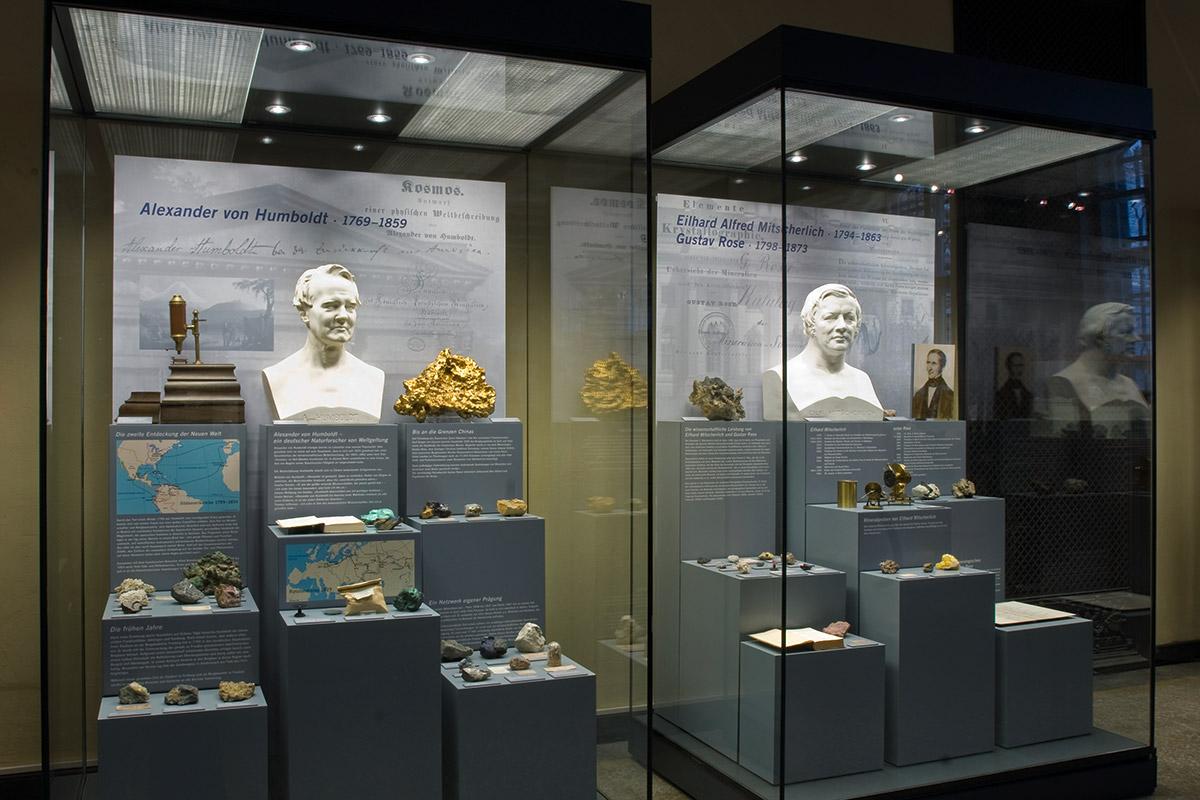On 17 June, the Museum für Naturkunde Berlin will celebrate Alexander von Humboldt's 250th birthday with a panel discussion, an exhibition intervention and a book publication. One of the book's authors, Dr. Ferdinand Damaschun, crystallographer, mineralogist, former exhibition director and deputy general director of the Museum für Naturkunde Berlin, has another mission before. At the invitation of scientists from the Freiberg Mining Academy and colleagues from the Gorny University in St. Petersburg, he will repeat with them parts of the legendary trip to Russia by the geographer and natural scientist A. v. Humboldt. His journey took him from Berlin to St. Petersburg and Moscow, then along the Volga to Kazan, then through the Urals, the Altai in Siberia and across the Caspian Sea back to Germany. Under the motto "The Living Legacy of Alexander von Humboldt", travellers will give lectures in various cities and make films that will later be shown in Germany and Russia.
The main aim of the trip for Damaschun is to promote and strengthen cooperation between Russian and German geologists and to make Humboldt better known again in Russia. Of course, the places where Humboldt worked are also of interest, e.g. Omsk and Tobolsk. The Damaschun route will lead to the Altai and Kazakhstan, by train and car. Humboldt, then in his mid-60s, covered an average of 70 km per day in eight months by horse and carriage. Riding was done at night, working during the day. Humboldt declared "the exploration of nature as a whole and the collection of evidence of the interaction of the forces of nature" to be his life's work. He analysed natural phenomena in their contexts and described nature and the world as a whole. Humboldt established several scientific disciplines, including physiogeography, landscape studies and ecological plant geography. His studies also contributed to a better understanding of geomagnetism. He contributed significantly to the description and research of mining in Russia and made a major contribution to the development of mineralogy. The collection of the Museum für Naturkunde Berlin contains most of the mineralogical finds that Humboldt brought back from his travels in America and Russia. The scientists have been working with it for almost two hundred years. Humboldt's life's work, his collection and the work of the Museum für Naturkunde Berlin under the motto FOR NATURE form a natural symbiosis. This is why Humboldt's handwriting is also part of the logo of the integrated Research Museum.
Damaschun answers the question about the personal expectations of the forthcoming journey as follows: "Three weeks is not a long time to make great discoveries, but it will be the start of our further studies, research and cooperative work. I am now mainly working as a science historian. In order to know where one wants to arrive, one must first know where one comes from and where the starting point was. If we look at the whole thing from this perspective, the history of science is very topical."
